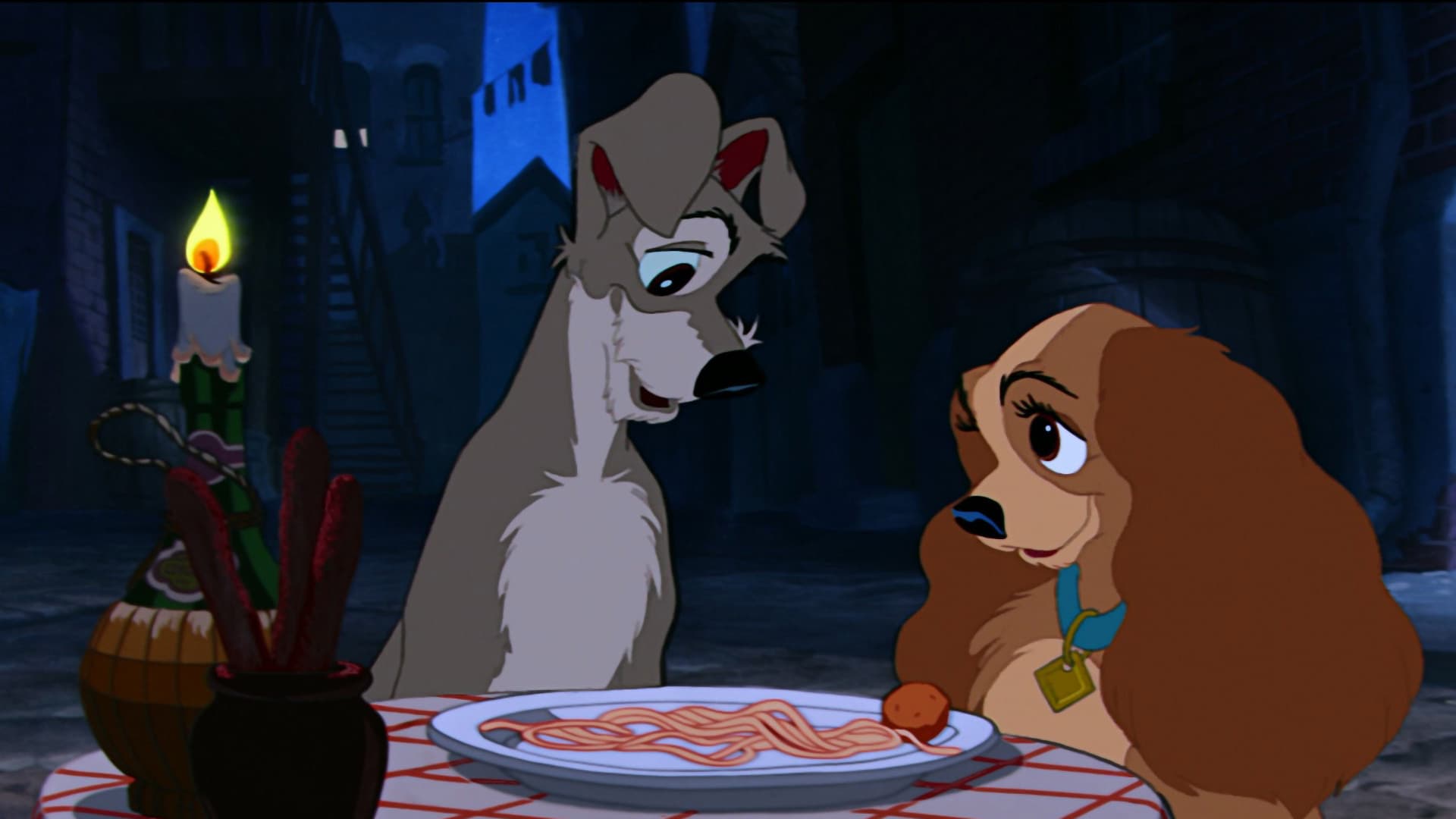A Study in Disney: ‘Lady and the Tramp’ (1955)
Disney is as much a part of our lives as love and death. It’s wrapped around us, and not just in our childhood. There are thousands and thousands of Disney movies by this point but the one that really shape the company and the culture are the animated features. Disney busted out of the gate in 1937, intending to create a new artform and make an evolutionary leap in cinema. So, every other day from now through March, I will be chronicling every single one of Disney’s canon animated features. It’s a fascinating journey, and a lot of fun too.

“In the whole history of the
world there is but one thing
that money cannot buy . . .
to wit – the wag of a dog’s tail.”
– Josh Billings
Lady and the Tramp opens with this lovely statement and thankfully never backs away from it. This is a movie in love with dogs. It loves the way they move, the way they howl, the way they beg, the way they sleep, the way they love us and most curiously the way in which they observe us. Here is a movie so in love with the canine world that you can imagine the animators crawling around on the floor for inspiration. We understand their body language, but here is a movie that wants us to get inside their heads. The movie closely observes not only their movements but also their attitudes regarding the world around them, a world in which the master is the center of all things and the curiosities of the world don’t extend much further than treats, mischief, nap-time and the ever-present net of the dog catcher.
The movie opens with a scene that has every dog lover smiling. It opens when Lady is just a puppy and the owners want to keep her in a basket in the basement. She persistently sits at the door and howls and cries until she gets their attention. Frustrated, the master of the house pushes a chair against the basement door. Undaunted, Lady pushes at the door until she has enough room to get out. Then she climbs the stairs and begs to sleep on their bed. Finally, the owners relent and let her sleep in their bed, but “just for tonight.” As Lady settles in, we see the passage of time and realize that one night has turned into a lifelong commitment.
Commitment is the key here. The story involves Lady’s dismay when her owners introduce a new baby into their lives and, through shenanigans and circumstance she ends up on the street being courted by a street-smart mutt named Tramp. It’s a blooming love story, Disney-style.
In observing the world of a dog, the animators also did away with the fantasy settings that, up to this point, had become the Disney trademark. The previous films of the decade, Alice in Wonderland and Peter Pan, occupy the same time frame (the early 20th century) but only in so far as the framework was concerned –the central core of their stories were the fantasy worlds of Wonderland and Neverland respectively. Here the landscape is, more or less, the real world. It takes place in New England sometime in the late 19th century or early 20th at a time between the horse-drawn coach and the advent of the motorcar.
Walt Disney was born and raised in this time period; he was born in Chicago in 1901 but famously grew up in Missouri. This is a time and place that he might have recognized, the sterile world of the early 20th century before World War I. The motorcars, the broad class distinctions and the landscape dotted with newly arrived immigrants make this setting uniquely American. Disney’s previous films were fuzzy on their locales whether it be Snow White that takes place somewhere in western Europe; Pinocchio takes place somewhere in Italy; Bambi that takes place somewhere in . . . God knows where! Canada? Wyoming? Washington state? Africa? Lady and the Tramp takes place in New England. We can see that. It is most obvious in the settings, the world of privilege and even in the scene in which Jim Dear nails a Yale banner to a wall in the baby’s room. High on the hill of this lush setting, Lady lives in the posh New England landscape of wealth and privilege. Cast out into the world, she ends up on the wrong side of the tracks where we see the lower end of the social spectrum, a world of back alleys, store fronts, and laundry strung between tenement buildings.
That simplicity is the movie’s masterstroke. Lady and the Tramp deals with, more or less, adult issues but in a way that a child could identify. It sees their world in microcosm with the adult human being the far distant mystery and romance being an even greater mystery. Grown-ups are seen in fleeting glances and their conversations are only as half-understood as their intentions. That the movie allows children to see the adult world through the eyes of a dog is another great element. It allows us to understand why we feel so close to our childhood pets. Why and how they are as baffled by the world as we are is one great mystery that the moment muses over. Its why we connect with our pets. The love is pure and uncomplicated. All it takes is the wag of a tail.








